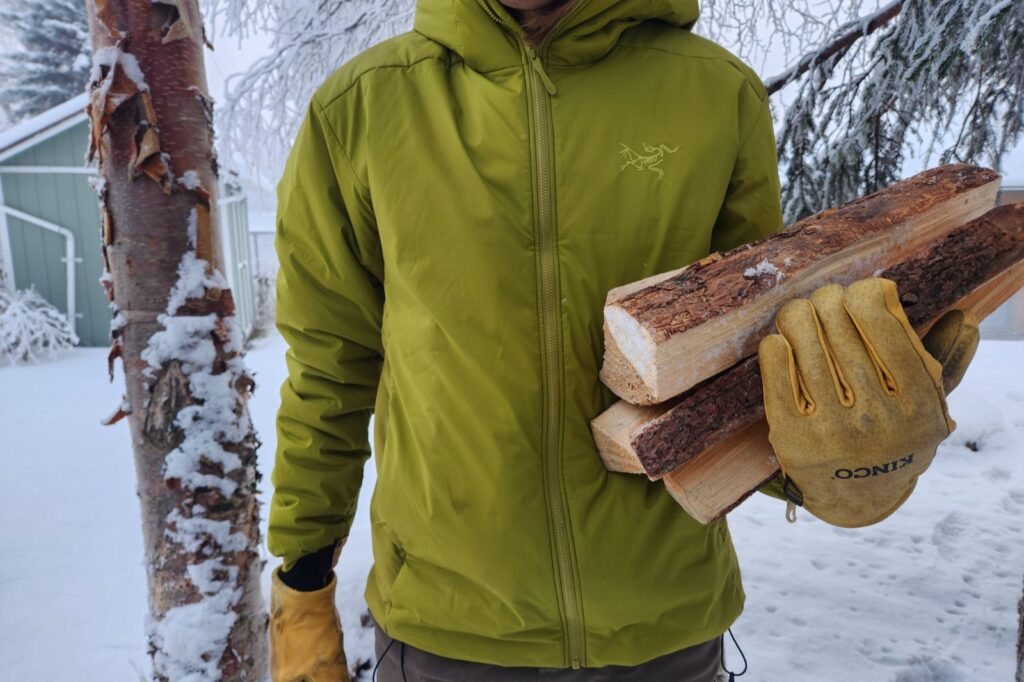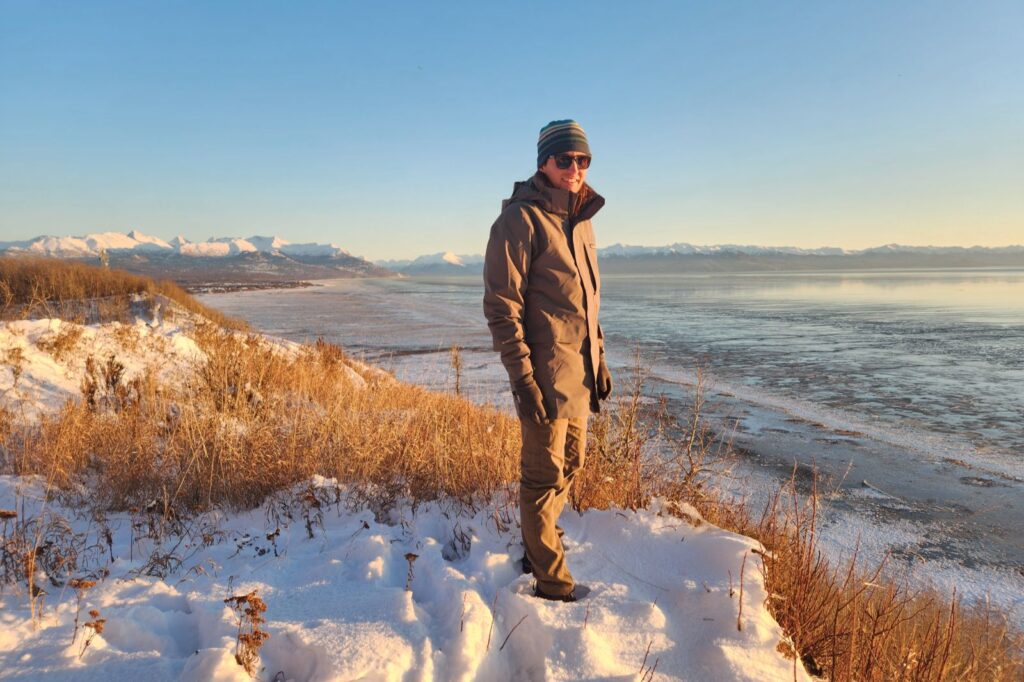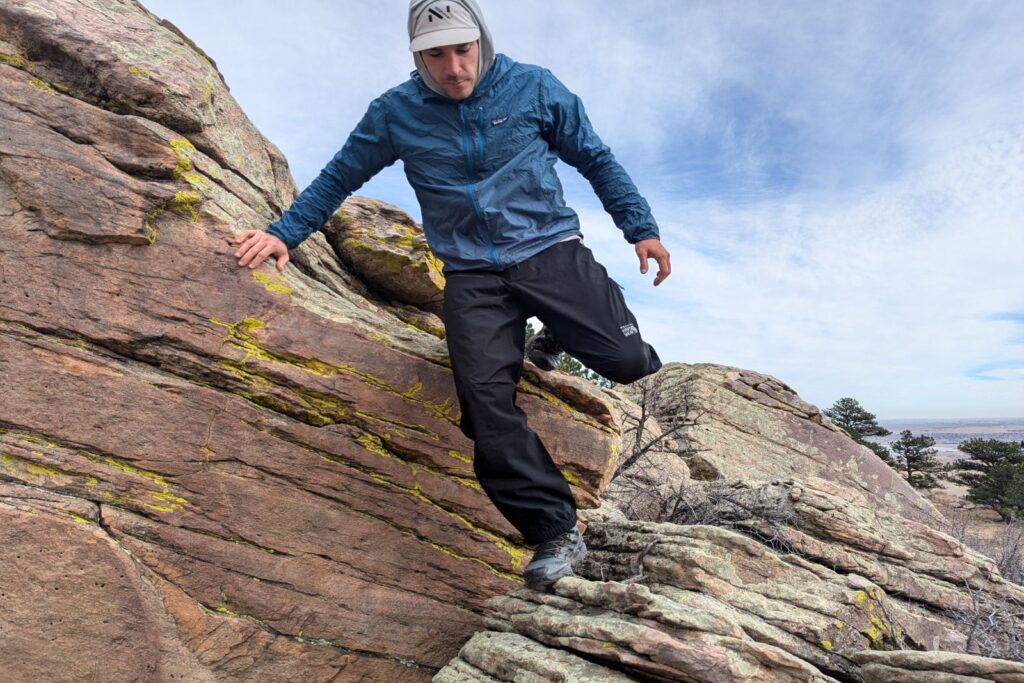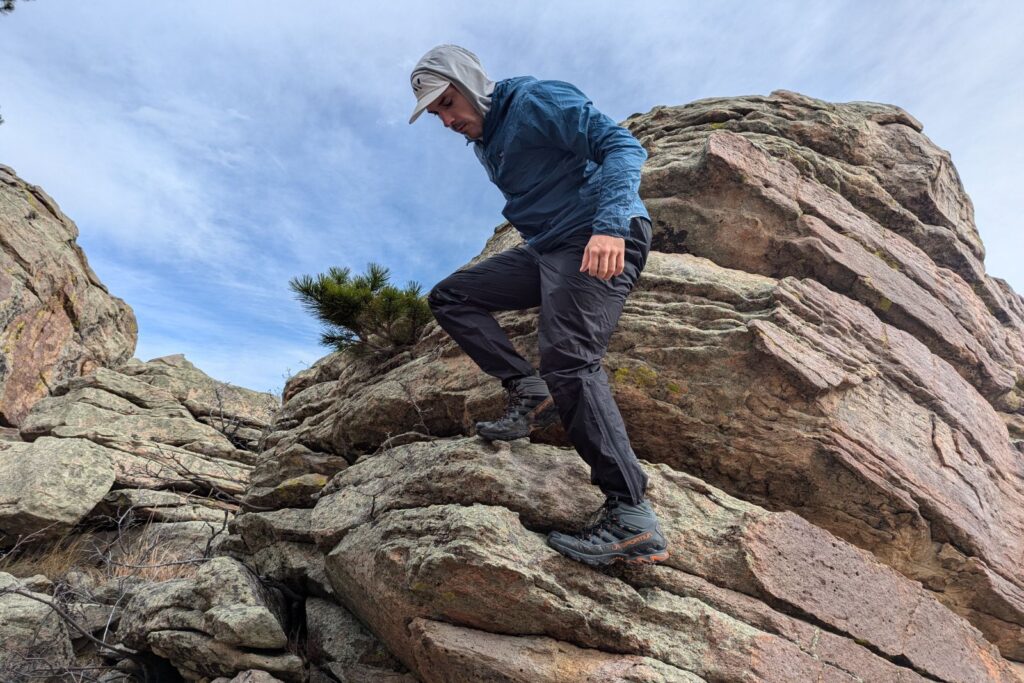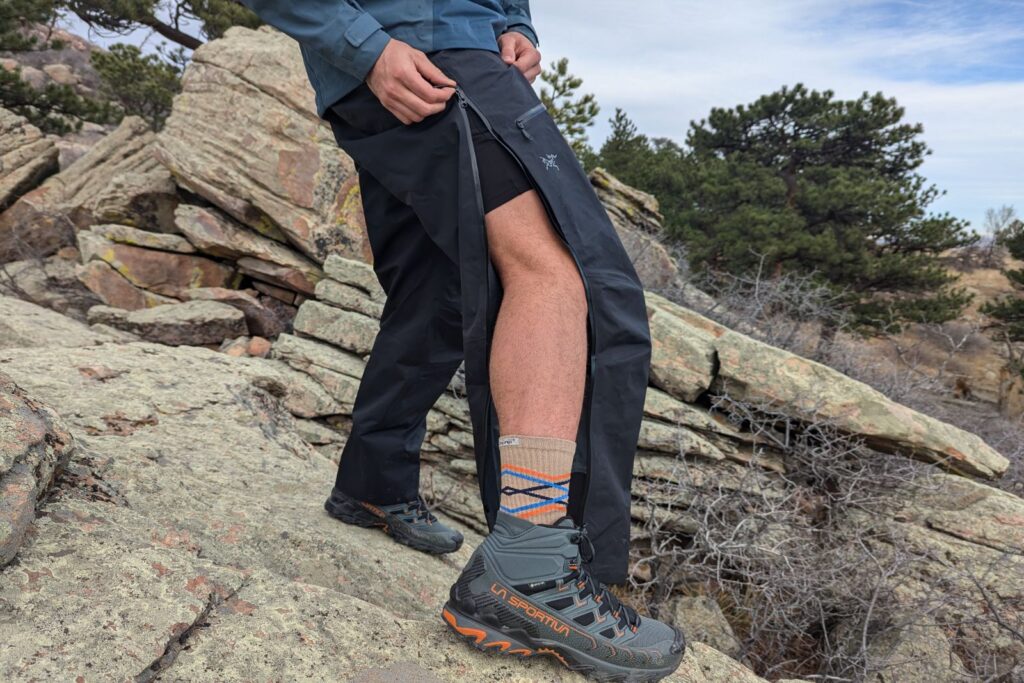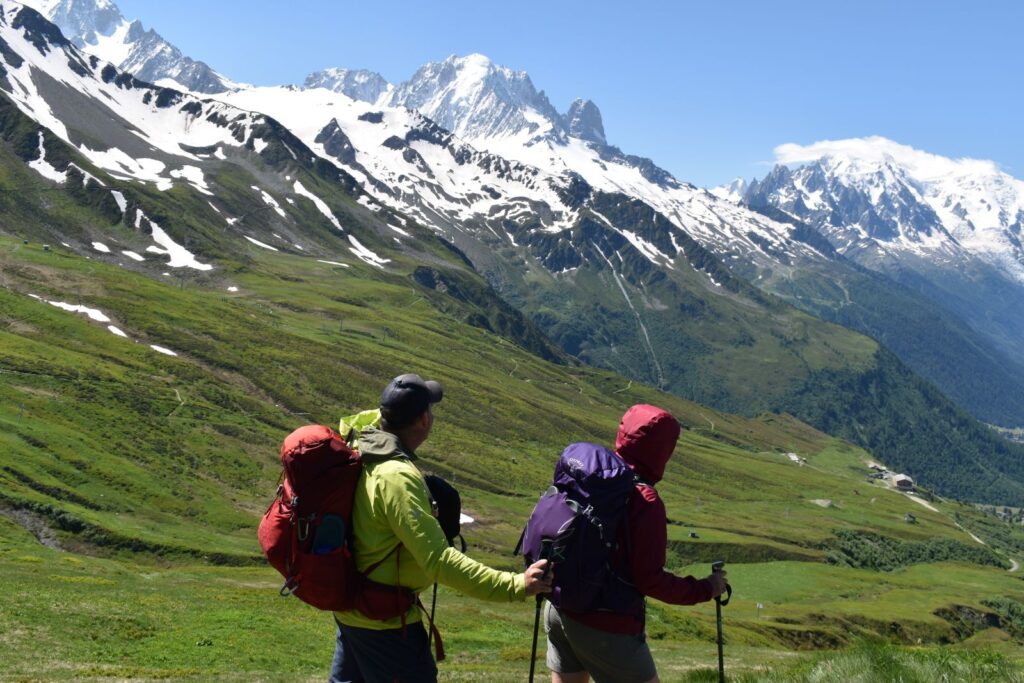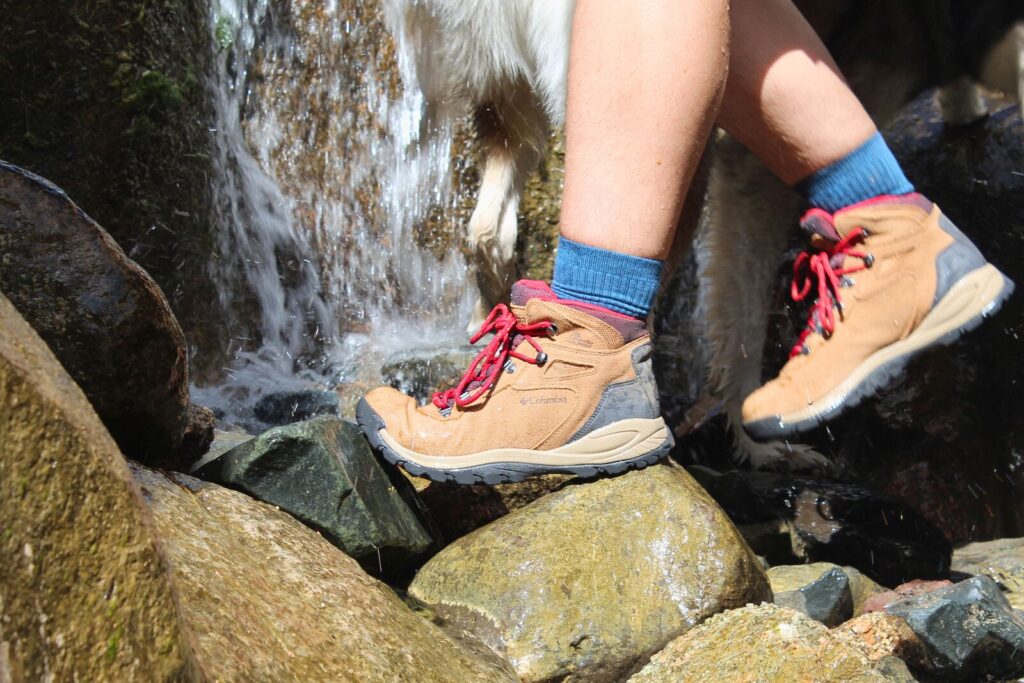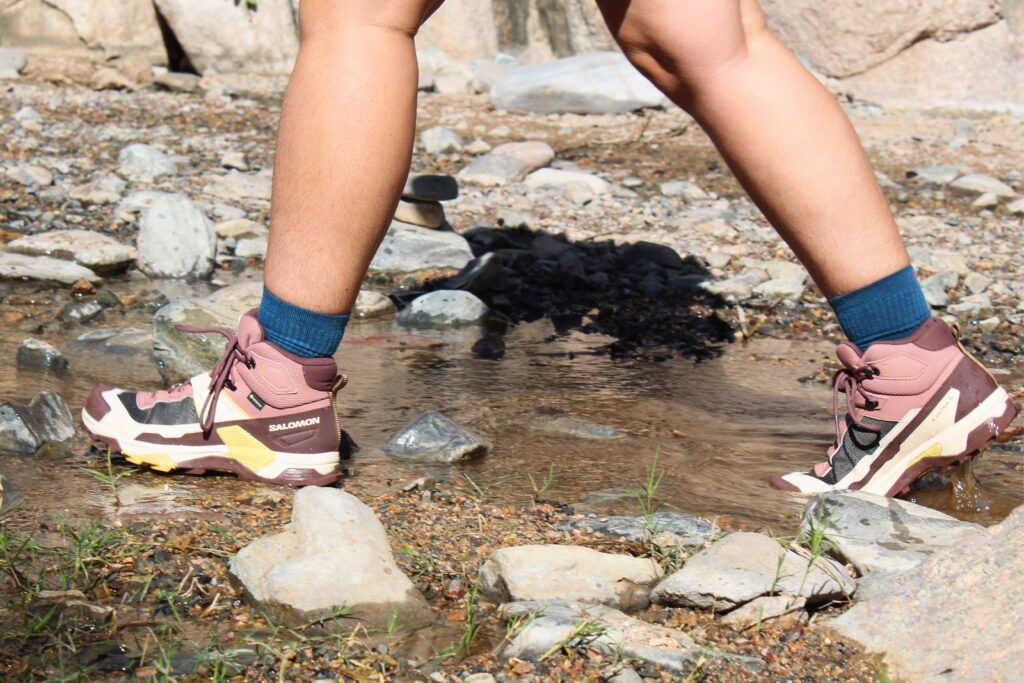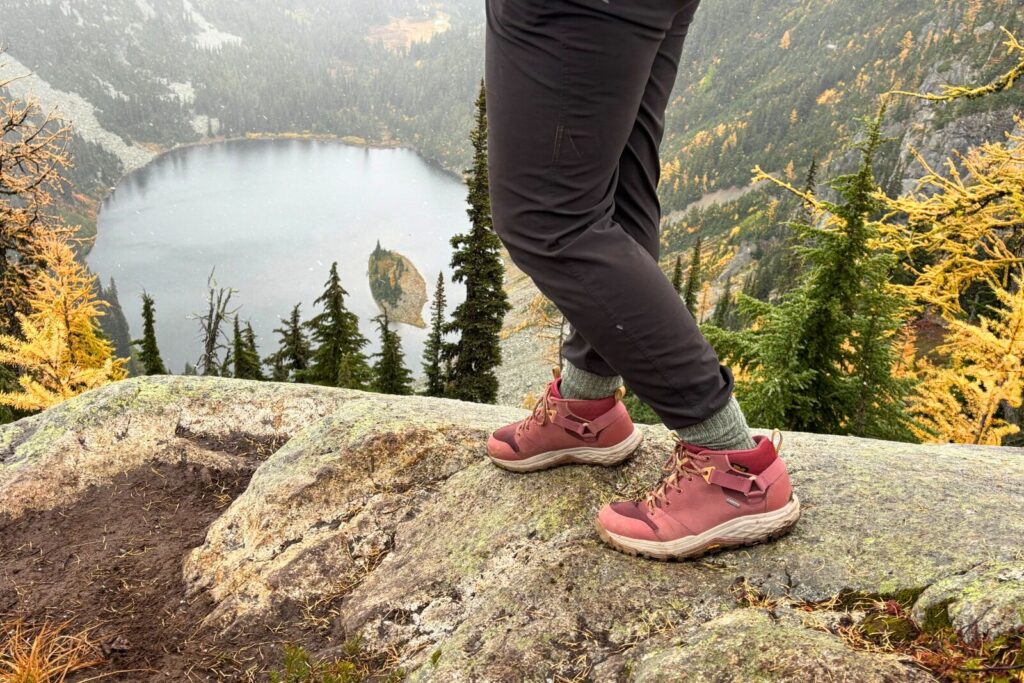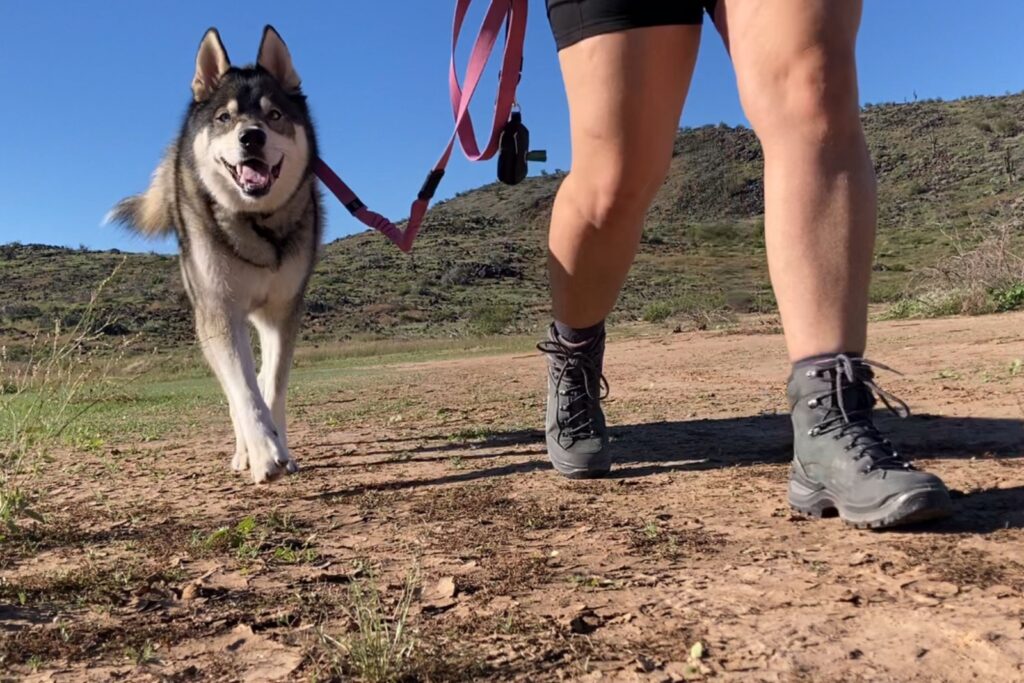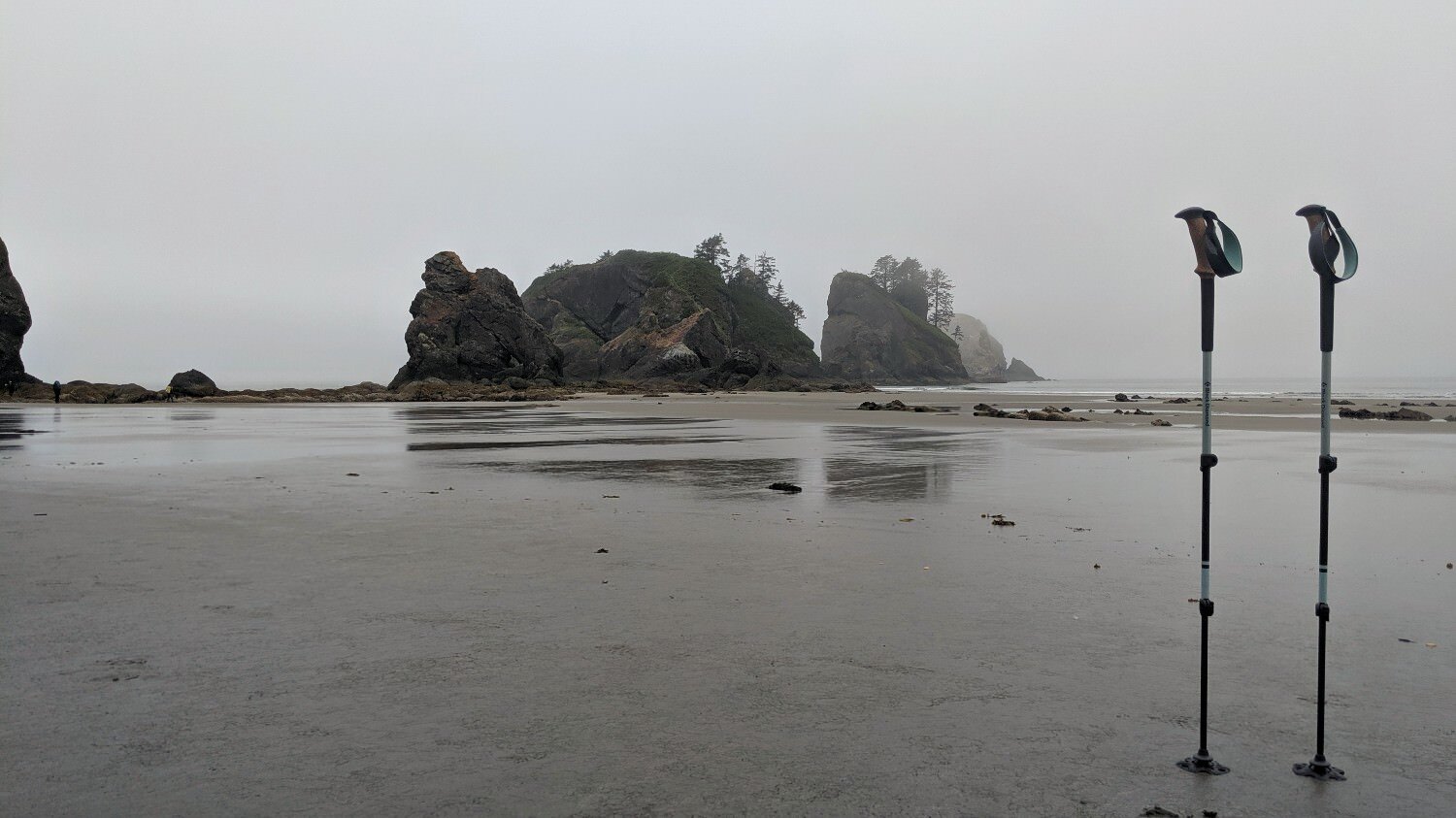
Whether you’re thru-hiking across the country or heading out on a quick weekend jaunt, trekking poles can add a lot of stability and comfort to your hike. Trekking poles shouldn’t be considered essential, but many hikers and backpackers love them for a variety of reasons.
In this article, we’ll break down everything you need to know about hiking with poles and what you should consider before buying a pair of your own. If you’re looking for our favorites, check out our list of the best trekking poles.
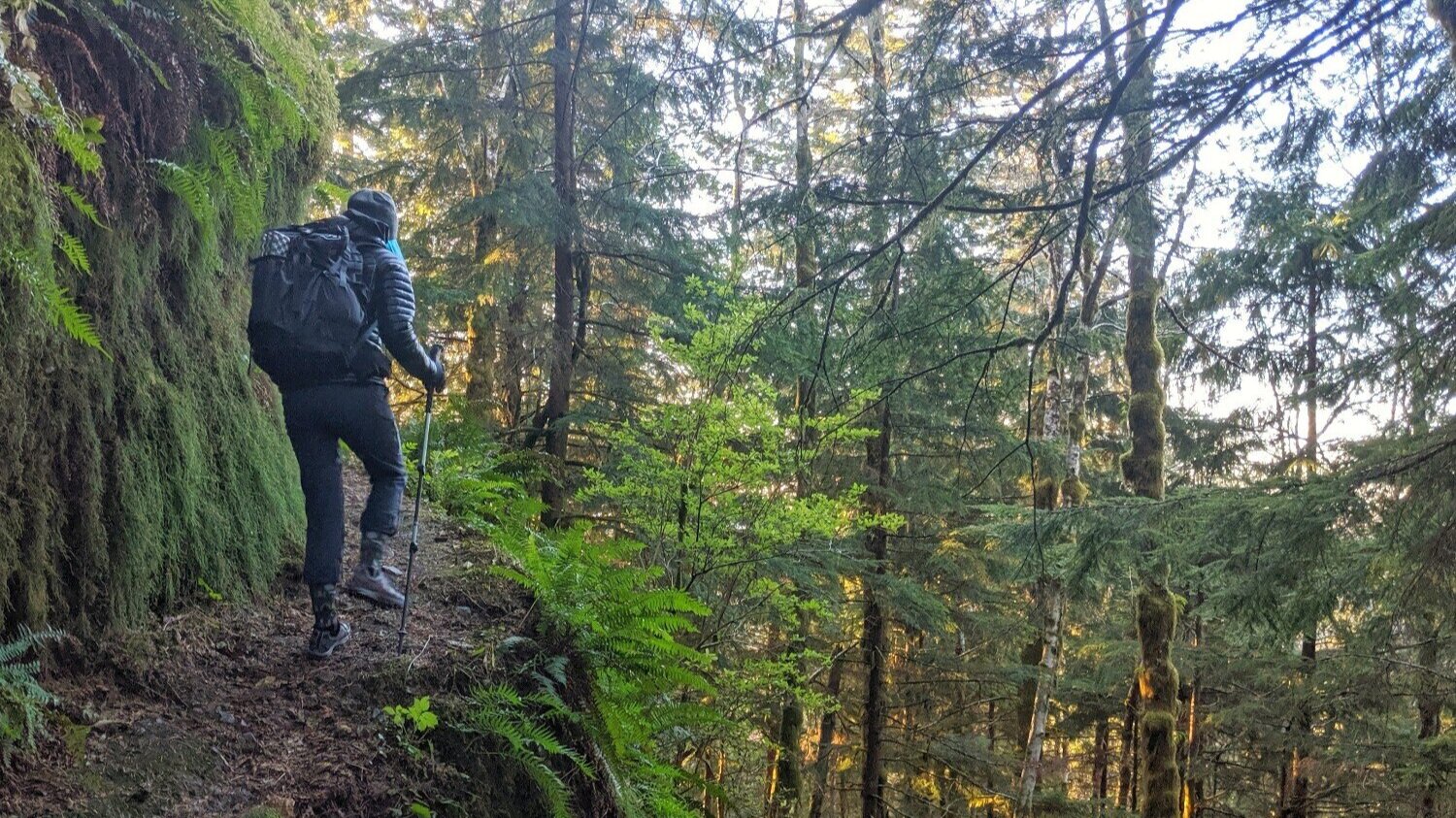
Why You Should Use Trekking Poles
Trekking poles take stress off your joints – The biggest advantage of hiking with trekking poles is that they absorb some of the shock your joints take when you step – especially on ascents and descents. Have you ever felt knee pain while hiking a steep downhill trail? Try using trekking poles to relieve some pressure from your knees and relieve pain.
Give your arms something to do! – Every day is leg day on hiking trails. Unless your hike includes boulder scrambles or bushwhacking, you may not engage your arms much. Trekking poles exercise your arms and pectorals and help keep your hands from swelling while you gain elevation. Dangling your arms at your sides while you ascend can lead to poor circulation, which can cause your fingers, hands, and wrists to swell. Keeping your arms elevated and the pumping action used with trekking poles promotes better circulation and can prevent swelling.
Maintaining balance – You know what’s better than two legs? Four legs. Trekking poles are another set of limbs that give you more stability when tackling tricky terrain. . The weight of your pack can make you prone to toppling over. Trekking poles help you stay upright and balanced, especially with a fully loaded pack at the start of a hike or after a resupply. Poles also help you keep your balance when crossing swiftly moving water, traversing snowfields and ice patches, trekking along narrow ridgelines, and when going up or downhill on loose ground like sand or scree. We have also, on more than one occasion, used trekking poles to remain upright while battling high winds.
Trekking poles can help you maintain a good posture and pace – Using trekking poles can get you walking in a smooth rhythm – foot, pole, foot, pole – and can help you sustain a good hiking pace for longer periods of time. We’ve noticed that we tend to hike a little faster when using trekking poles, and the repetitive motion can be somewhat meditative while we hike. We also noticed that we tend to have a more upright posture rather than being bent over by the added weight of a pack.
Poles can be used to test ice strength and water depth – It can be hard to determine how deep a water crossing is or how thick the ice on a frozen stream is. Trekking poles can take the guesswork out of it and help you cross hazards safely.
Leave the tent poles at home – We love multipurpose items. Some ultralight tents ditch the tent poles and use trekking poles to hold the structure instead. If you want to learn more, we have you covered with our lists of the best backpacking tents and best ultralight tents.
Trekking poles can help keep wild animals at bay – It’s always important to stay aware of your surroundings in the backcountry. Do what you can to avoid sneaking up on wild animals or encroaching on their territory. Despite our best efforts, sometimes animal encounters are inevitable. If you find yourself too close for comfort to a large animal such as a bear, banging your poles together or against trees and rocks makes a clacking sound that often scares the animal away. You can also wave trekking poles above your head to make yourself appear larger, which can discourage animals from approaching you.
Trekking poles can help you get a hitch into town – Whenever we need to catch a ride from trail to town or vice versa, we always keep our trekking poles out. Poles signal to drivers that you are a hiker needing to get somewhere, and in our experience they have increased the likelihood of a quicker pick-up.

Why You Might Not Use Trekking Poles
Trekking poles can be cumbersome – The biggest drawback of trekking poles is that they can be limiting in some situations. Some trails require hand-over-hand climbing or rope assists. It’s annoying to have to stash your trek poles on your pack, and then get them back out, and then stash them, and then get them back out. Likewise, if you like to take a lot of photos like we do, trekking poles tie up your hands and can get in the way when you need to grab a quick shot.
Weight – Some people like to use their poles only on uphill and downhill stretches of trail. This might not sound like a lot of extra weight to periodically carry, but all those one or two-pound items add up!
You may be using more energy – It’s generally accepted that pumping your arms with trekking poles expends more energy than walking without poles. There haven’t been many studies on this, and some people disagree. We feel that a little extra workout for our arms isn’t necessarily bad. If the stress-reducing benefits of trekking poles are a good fit for you, then the extra expended energy is likely totally worth it.
Expensive – Putting together a good hiking/backpacking kit can be pretty expensive and trekking poles are no exception. However, there are more reasonably priced options out there. We recommend the Montem Ultra Strong Trekking Poles if you want a solid pair around $100.
Not always LNT-friendly – The carbide tips on many trekking poles dig into rock, often leaving scratches, gouges, and chips in rock formations on the trail. This can be off-putting to some, especially when traveling over old and pretty granite formations.
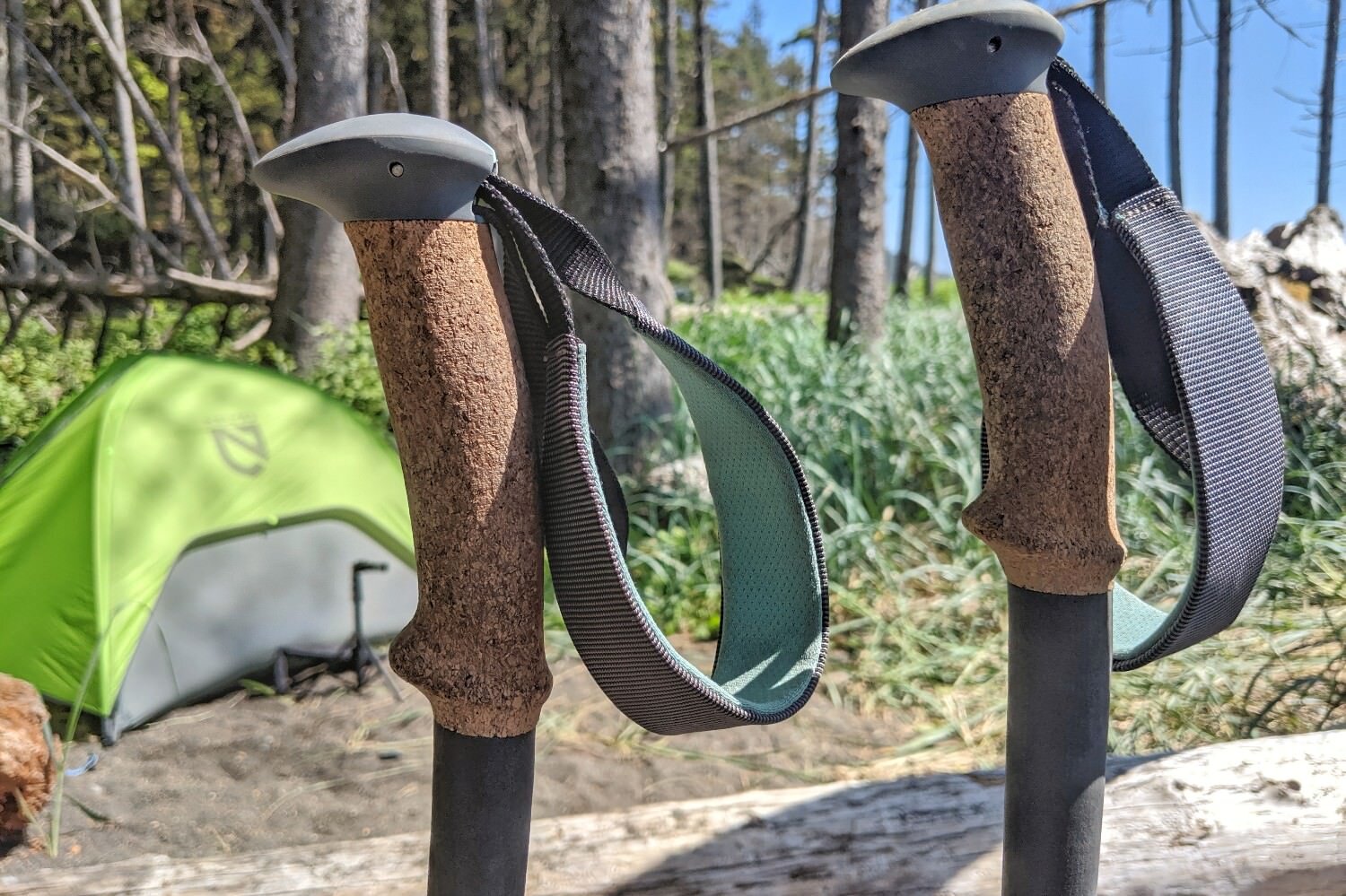
Which Poles Are Right For You?
There are many trekking pole options, and the subtle differences can be hard to distinguish when you begin shopping for a set of trekking poles. Here are some things to consider when making your choice.
Pole Material
Carbon Fiber – Carbon fiber is a lightweight yet durable fiber-reinforced plastic. Carbon fiber poles are popular among lightweight backpackers and folks who keep their poles stashed until they encounter trickier terrain. While carbon fiber is very strong, it’s less durable than aluminum. If you’re the type of hiker who relies on poles to keep your balance, carbon poles may not be for you. If a carbon fiber pole fails, it will snap, and you might be going down. Because carbon fiber is ultralight and requires a more involved process to manufacture, it is considerably more expensive than aluminum.
Aluminum – Aluminum is a durable and decently lightweight metal that withstands heavy wear and tear. We like aluminum poles because they are reliable and much more affordable than carbon fiber poles. In the rare case of an aluminum pole failing, it will usually bend rather than snap. That means it can be much easier to regain balance before falling if the pole should give out. Aluminum is slightly heavier than carbon fiber. If you keep your poles stashed most of the time while you’re hiking, they may not be your top pick.
Grip Material
Cork – We think cork is the best material for pole grips. It’s comfortable, durable, and porous, so it can wick away sweat from your hands and prevent blisters. One drawback to cork is that it tends to be more expensive than other grip materials. Another is that because it is a porous and natural material, we’ve had an instance where some desperate critter chowed down on them in the midnight hours.
Foam – Foam is a comfortable and generally more affordable grip material. It will break down quicker than cork or rubber, but it is still decently durable.
Rubber – Rubber grips are very durable and generally affordable, but they tend to be the least comfortable. They can be hard to grip if your hands get sweaty, and they are more likely to cause blisters. For these reasons, we don’t recommend rubber-gripped trekking poles.
Pole Design
Telescoping – Telescoping poles have the most adjustability, making them good for those who like to adjust the height of their trekking poles depending on the terrain. This is also useful if you plan to use your trekking poles as tent poles. Due to the extra length allowance, telescoping poles tend to weigh slightly more than trifold and fixed poles. This is the most common pole design.
Trifold – Tri-folding trekking poles generally have the lightest and most compact design. They have three pieces held together by an internal tension cord and held in place by a push-button locking mechanism. Trifolding poles are great for those who do a lot of airline travel because they usually fold down small enough to fit in small luggage. We’ll talk a little more about airline travel with trekking poles later.
Fixed – Fixed-height trekking poles are uncommon, and we tend not to recommend them because they are hard to stow on your pack when they’re not in use. Fixed design is more typical of ski poles. We don’t recommend using ski poles for hiking because the two styles are held at different heights and have different shapes for their respective sports.
Sizing
It’s important to have the right sized trekking pole to fully enjoy the benefits of hiking with them. Poles that are too tall will push your posture back and could cause discomfort in your shoulders. Poles that are too short will cause you to lean forward and could put a strain on your back. When holding your poles at your sides, your elbows should be at a right angle. This will ensure good posture and will maximize the comfort and effectiveness.
Our Top Recommendations
We researched and tested dozens of poles to create this list of the Best Trekking Poles. All the poles listed below balance durability, comfort, weight, and value. We hope this list helps you find the ideal trekking poles for your needs.
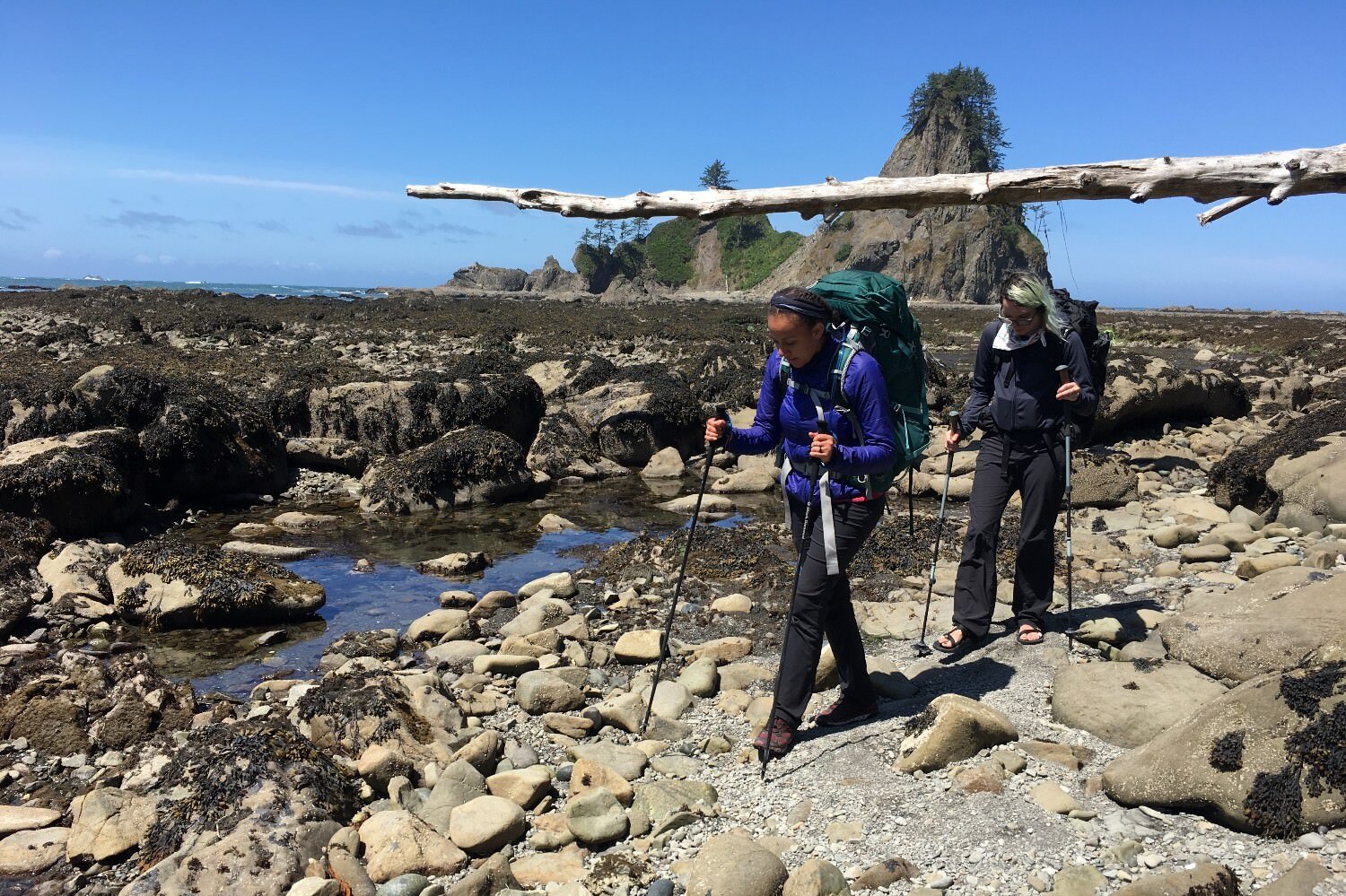
Airline Travel
According to the TSA website, trekking poles are only permitted in checked luggage. If you know you will be flying with your poles a lot, you’ll probably want to go with tri-folding poles because they pack down smaller and can fit better in travel bags. You can also pick up a pair of tip covers (or wrap them in duct tape, cardboard, aluminum foil, or a plastic bag) when traveling to keep your pole tips from tearing through your bag.
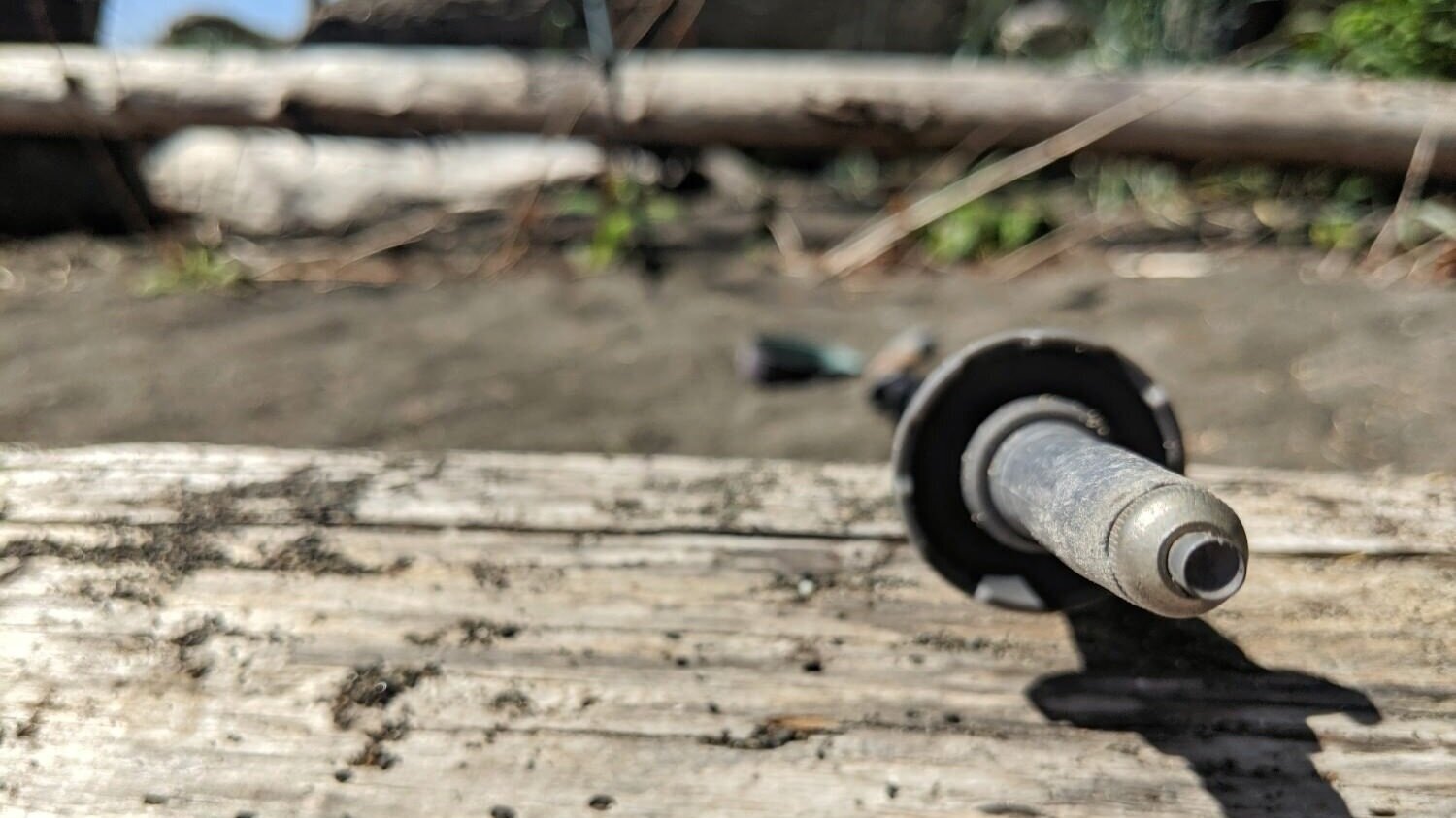
Accessories
TIPS – Many poles have interchangeable tips or can be modified with different caps for various types of terrain. Carbide tips are the standard tips that most poles come with, and they are designed for all-terrain hiking. They are especially good for gripping rock and ice. You can easily replace them on most trekking poles if they are worn down by unscrewing the old ones and then screwing in new ones. Black Diamond and Leki offer screw-on replacement tips, to name a few.
TIP COVERS – As we mentioned above, tip covers are great for protecting your stuff from damage by the carbide tips during airline travel or if you store your poles in a closet.
RUBBER CAPS – Rubber caps are a great accessory for anyone who uses trekking poles around town or on paved hiking trails. The standard carbide tips that most poles come with will wear down quickly on pavement, so it’s a good idea to use rubber tips to protect them. Most manufacturers make specific rubber tips that slip over the end of their trekking poles; Leki makes a cool footed rubber walking tip designed for more efficient movement.
BASKETS – Baskets easily screw onto the end of poles and help to keep them from sinking way down into sand and snow; we bring them along for coastal hiking and snowshoeing. Most pole manufacturers make specific baskets for their poles, such as the Black Diamond Powder Snow Baskets and the Leki Snowflake Baskets.
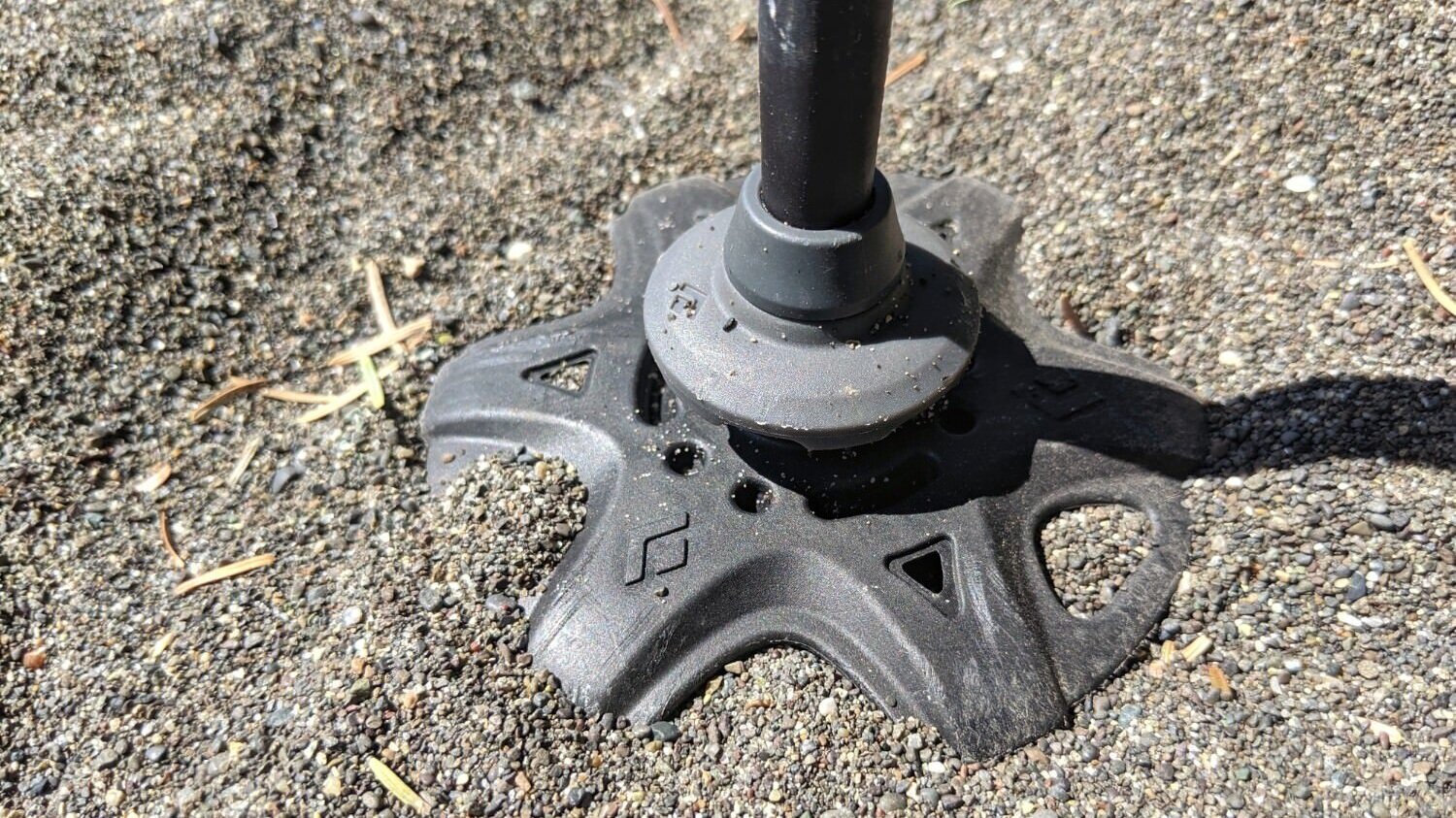
How To Use Trekking Poles
HEIGHT ADJUSTMENT – When you hold your trekking poles by your side, make sure the poles’ height puts your elbows at a 90-degree angle.
GRIP – When grasping the grip, put your hand through the bottom of the security strap so that the top of the strap is between your thumb and index finger. Holding the poles properly prevents you from death gripping the handles. It will also be safer for your wrists and thumbs if you need to catch yourself while falling.
STRIDE – The most efficient way to walk is to strike with the pole opposite of the foot you step with. So, if you are stepping with your right foot, you should be placing your left pole down. The pole should strike the ground near your back foot to propel you forward. This method may require some practice, but you’ll get into a good groove after a few tries.
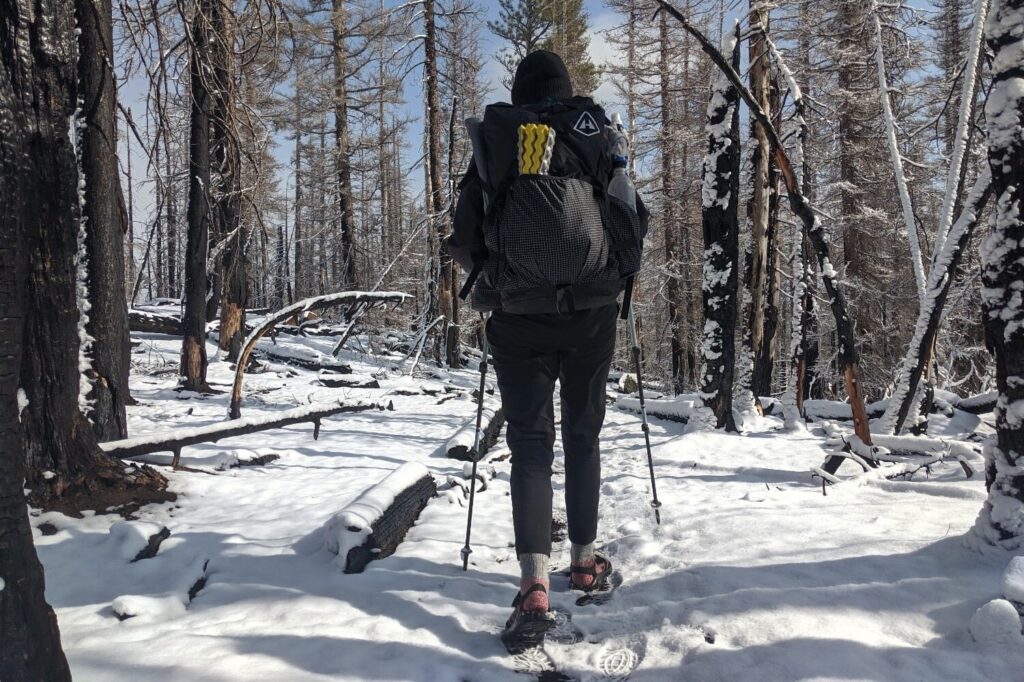
Final Thoughts
Trekking poles are not a strictly necessary piece of gear, but many choose to take them on their hikes because they provide a lot of benefits. Poles take a lot of strain off your joints while you hike and can help you maintain balance through various types of tricky terrain. Some find that they hike faster while using poles and enjoy keeping their arms entertained, while others find trekking poles cumbersome and don’t like that they occupy their hands. If you choose to hike with trekking poles, It’s important to ensure your poles are adjusted to the correct length and to have the proper technique to get all the benefits they provide.



